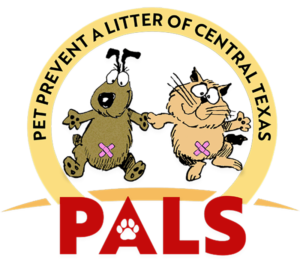Community Cats


Consider volunteering to help Community Cats. Trapping, transporting, or providing a garage for staging cats are all ways to help. It's a team effort, and TNRM makes a real difference in the lives of unowned cats and kittens. *Please note, PALS does not trap TNRM animals, we only provide traps for community members to use. To schedule to have your trapped cats serviced, click the link to our sign-up genius page to reserve a spot.
Spring into Action for Kittens
It's common to find kittens that have been born to a stray or unowned cat. What’s the best course of action to take care of these young lives?
First of all, young kittens are always better off with their mother until about five weeks old, so if you see kittens without their mother, observe from a distance and wait at least four to six hours to allow their mother to come back.
What to Do if You Find Kittens
If you’re sure that the kittens are without their mom, there are steps to take, depending on the age of the kittens and whether the mother is socialized or unsocialized. Austin Pets Alive has a good guide on their website for assessing the situation and taking appropriate steps.
Animal shelters and rescue groups can help some, but there is a lot that individuals can do to help find kittens good homes. Read on to find out more....
What is Trap-Neuter-Return-Maintain?
Trap-Neuter-Return-Maintain (TNRM) is the only effective and humane method of controlling the unowned cat population. TNRM spares the lives of free-roaming cats, whether they are socialized or not, stray or abandoned. Cats are trapped humanely, spayed or neutered, vaccinated, and then returned to their outdoor homes. During surgery, the cats’ left ears are tipped so that they can easily be recognized as having been spayed/neutered. Back in their colonies, the cats live healthier lives, nuisance behaviors such as yowling, spraying, roaming, and mating, disappear, there are no more litters, and the colony numbers naturally reduce over time.
To learn more about feral cats, please visit Alley Cat Allies or visit our resources page.
Learn How to Trap and Fix Cats
New to trapping community cats for TNRM? Please view this guide and watch this video. Anyone can do it!
In the San Antonio area, learn the basics of TNRM and how you can help improve the lives of community cats: TNRM Classes in San Antonio. Visit our calendar to find more learning opportunities and check out our resources page for more information as well.
Barn Cat Program
While TNR is always the best course of action for community cats, there are some instances when these cats end up at the shelter and cannot be returned to their outdoor homes. Since these cats cannot be adopted into traditional pet homes, being adopted out as “barn cats” or “working cats” is their only chance at life.
If you're looking for some low-maintenance mousers for your barn, warehouse, shop, porch, or other outdoor structure, please consider adopting some barn cats from the San Marcos Regional Animal Shelter and let them go to work for you! They come spayed/neutered, microchipped, vaccinated, and are FREE (though donations are greatly appreciated to help sustain this program). More information can be found here.
Free and Low-cost Spay/Neuter Resources for Community Cats*
Please refer to our Resources page for more information about free and low-cost options for spay/neuter of community cats.
The best plan of action is to get an accurate count of how many cats there are and aim to trap all cats at one time if possible, as it can be more difficult to single out individual cats later. The goal should be for all cats in the colony to be sterilized within a relatively short time period. If there are nursing females, don’t trap those until the kittens are eating on their own. Kittens can get fixed as young as 3 pounds or 4 months old. And they can get pregnant as young as 4 months old, so don't wait!
PALS Policy on FIV testing of Community Cats

When we moved here, we were surprised to find so many wild cats living in San Marcos. As I’ve increasingly tried to help – by catching kittens and their moms and finding homes for them – PALS has been a tremendous help. They have helped me learn about trapping, pay for spaying and neutering, and fostering kittens. Together with PALS I was able to trap and find homes for 13 kittens last year.
Chris
San Marcos, TX
Chris
San Marcos, TX



